Explore the Historic Site of the Nanchang Uprising Headquarters: A Must-Visit for History Buffs
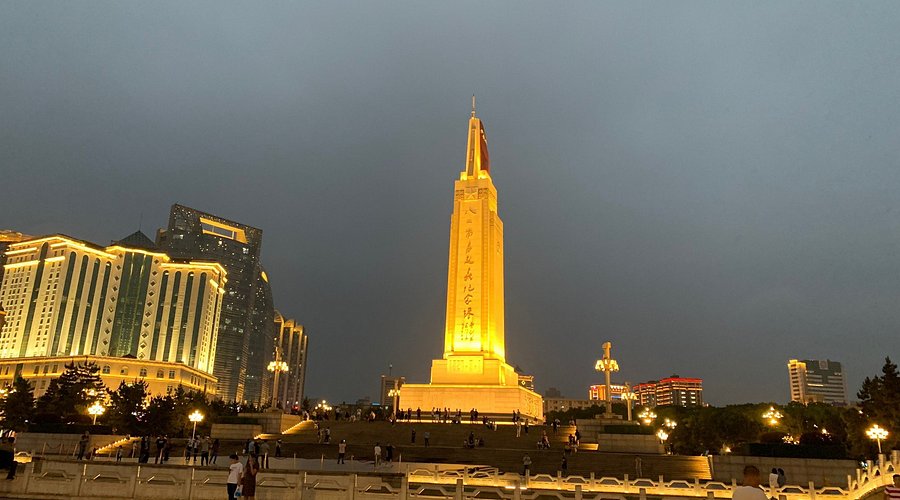
An Essential Guide to Visiting Site Of The Nanchang Uprising Headquarters
In This Guide
- An Essential Guide to Visiting Site Of The Nanchang Uprising Headquarters
- The Rich History and Legends of Site Of The Nanchang Uprising Headquarters
- Main Highlights: What You Absolutely Can’t Miss
- Planning Your Visit: A Practical Guide
- Tickets: Prices, Booking, and Tips
- How to Get There: A Complete Transportation Guide
- Local Cuisine and Accommodation Nearby
- Frequently Asked Questions
- Final Thoughts on Your Trip
The Site of the Nanchang Uprising Headquarters stands as a poignant testament to a defining moment in Chinese history. Nestled in the vibrant city of Nanchang, Jiangxi Province, this memorial site commemorates the August 1, 1927 uprising, which marked the inception of the Chinese Revolutionary War led by the Communist Party. The rebellion, which erupted with a single gunshot, signified the birth of what would eventually become the People’s Liberation Army, a pivotal force in China’s modern history.
As you step into this historical landmark, you are not merely visiting a museum; you are embarking on a journey through time—a journey that unfolds the narrative of courage, struggle, and the quest for a new social order. The headquarters, originally constructed in the 1920s, combines elements of traditional Chinese and Western architectural styles, symbolizing the cultural confluence that characterized the era. Its walls are imbued with stories of revolutionary leaders like Zhou Enlai and Zhu De, who orchestrated a pivotal movement from within its confines.
What Awaits You
Visitors can explore two main buildings: the original headquarters, now a museum, and a modern extension housing expansive exhibition halls. With ten exhibition rooms showcasing over 1,200 artifacts, including military uniforms, personal belongings of the uprising’s leaders, and commemorative statues, the site offers a comprehensive insight into the events of that fateful day.

Site Of The Nanchang Uprising Headquarters.
Visiting Insight
While entrance is free, be mindful of daily visitor limits—only 3,500 guests can enter each day, which may necessitate some patience during weekends and holidays. Guided tours are available, ensuring that every visitor leaves with a deeper understanding of the historical significance of the uprising and its enduring impact on Chinese society.
Getting There
Easily accessible via public transportation, the memorial is located at No. 380 Zhongshan Road, and nearby bus routes and subway lines facilitate a straightforward journey to this essential destination.
In Summary
The Site of the Nanchang Uprising Headquarters is more than just a memorial; it is an invitation to reflect on the complexities of history and the relentless spirit of those who fought for change. Whether you are a history buff, a cultural enthusiast, or simply curious about China’s past, this site promises an enriching experience that resonates far beyond its physical walls.
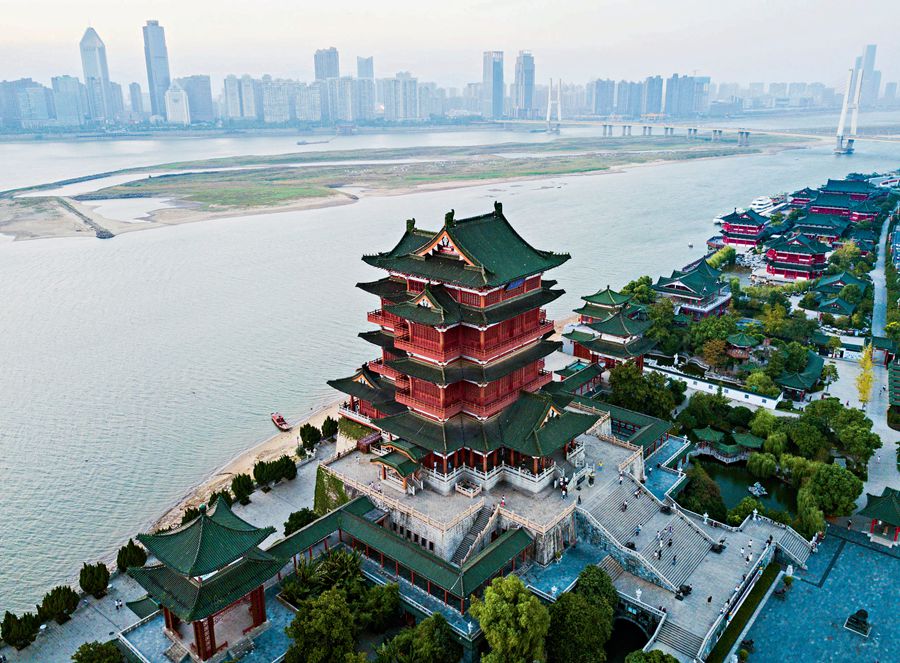
Site Of The Nanchang Uprising Headquarters.
The Rich History and Legends of Site Of The Nanchang Uprising Headquarters
Nestled in the heart of Nanchang, Jiangxi Province, the Site of the Nanchang Uprising Headquarters stands as a vital testament to the early revolutionary fervor that shaped modern China. This memorial site not only commemorates the August 1 Nanchang Uprising of 1927 but also embodies the ambitions and struggles of a nation on the brink of transformation.
The Birth of a Revolution
At precisely 2:00 a.m. on August 1, 1927, the crack of a gunshot marked the beginning of an insurrection that would alter the course of Chinese history. This uprising, orchestrated by leaders including Zhou Enlai, He Long, Ye Ting, and Zhu De, aimed to establish a new regime that represented the working class and peasantry. The rebels swiftly captured Nanchang, which became a pivotal stronghold for the Communist Party as they sought to ignite a nationwide revolution against the ruling Kuomintang (Nationalist Party).

Site Of The Nanchang Uprising Headquarters.
The uprising, however, was not without its challenges; it faced fierce resistance and internal strife, leading to a quick suppression. Nonetheless, it solidified August 1 as a significant date in Chinese revolutionary history, later celebrated as the founding day of the People’s Liberation Army (PLA).
Architectural Significance
The memorial itself is housed in a building that was once the Jiangxi Travel Agency. Constructed between 1922 and 1924, this five-story structure is a remarkable fusion of Chinese and Western architectural styles, characterized by its unique “Hui” shape and decorative reliefs. This aesthetic not only reflects the cultural synthesis of the period but also serves as a silent witness to the revolutionary meetings that took place within its walls.
In 1956, the building was transformed into a museum, dedicated to preserving the memories of the uprising. The site was officially opened to the public in 1957, with its name inscribed by Marshal Chen Yi, a prominent military leader.
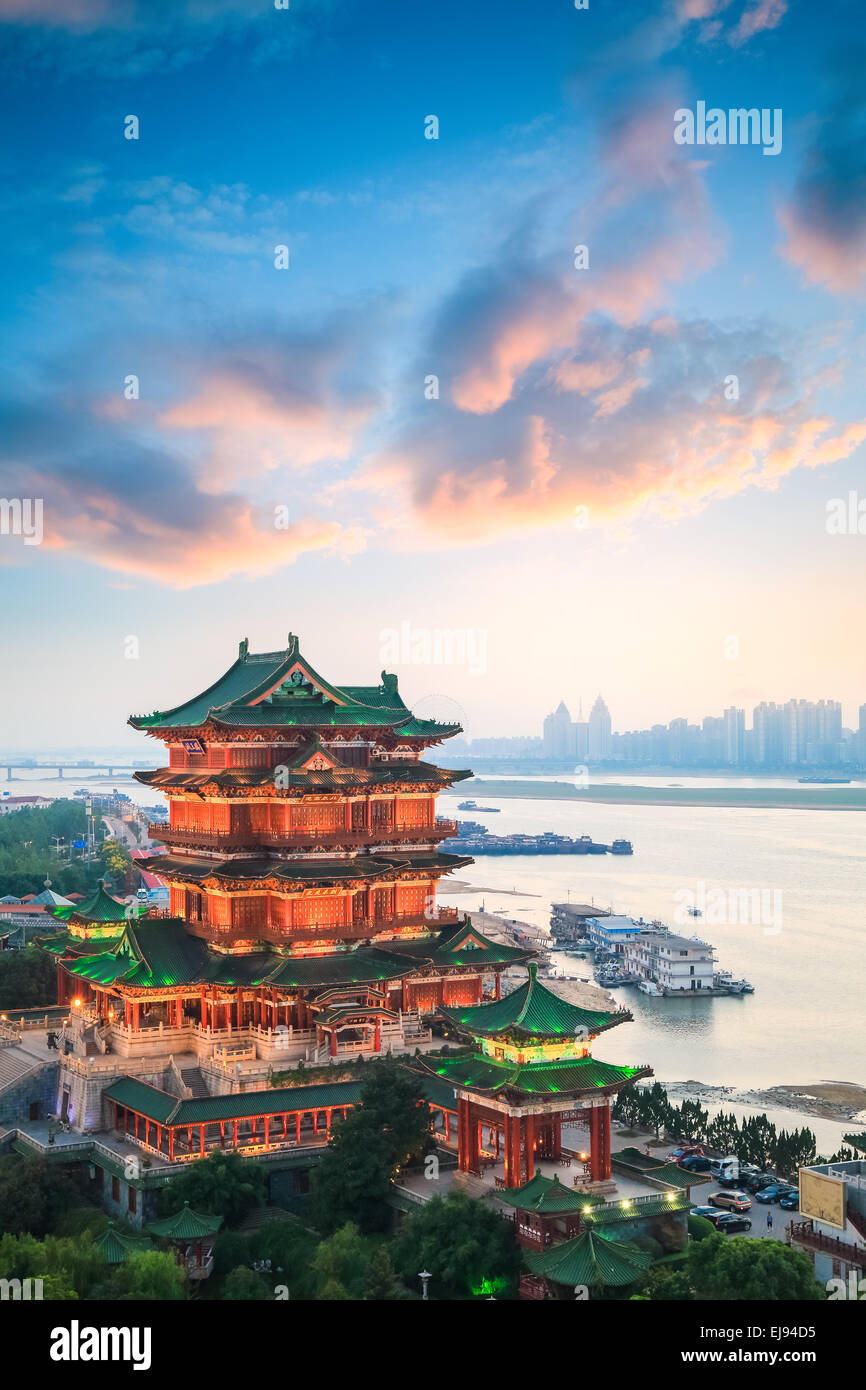
Site Of The Nanchang Uprising Headquarters.
Stories and Legends
Throughout its storied past, the Site of the Nanchang Uprising Headquarters has become a canvas for legends that celebrate bravery and sacrifice. One such tale recounts how a group of resolute soldiers, outnumbered and outgunned, managed to hold their ground against a much larger enemy force, using sheer determination and ingenuity. These acts of valor are immortalized within the museum’s exhibitions, which include over 1,295 original artifacts and 1,416 replicas, offering visitors a deeper understanding of the uprising’s impact.
The museum features several key areas, including:
- The Meeting Hall: Where strategic discussions were held.
- Zhou Enlai’s Office: A glimpse into the life of one of China’s most revered leaders.
- Military Staff Office: Showcasing the organizational framework that supported the uprising.
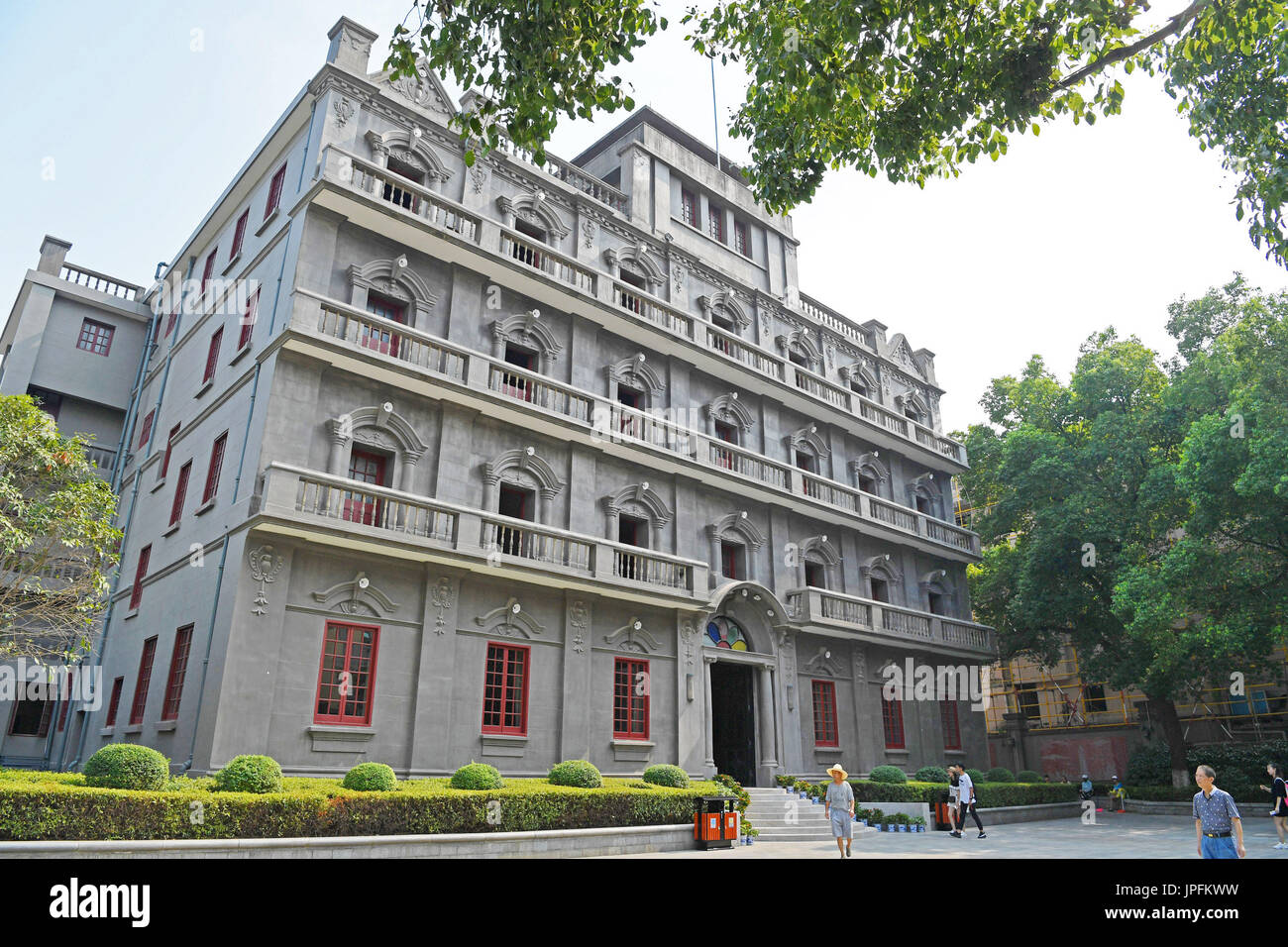
Site Of The Nanchang Uprising Headquarters.
Visitors can explore detailed historical charts, photographs, and personal artifacts of those who lived through this tumultuous time, each narrating a piece of the larger story.
A Living Memorial
Today, the Site of the Nanchang Uprising Headquarters serves not only as a memorial but also as an educational hub where the richness of Chinese revolutionary history is shared with the world. The museum offers free guided tours, ensuring that both groups and individual visitors can engage with the past in meaningful ways. Although entry is free, it is advisable to arrive early, as the site limits daily visitors to 3,500 to maintain an intimate and educational atmosphere.
Conclusion
For international travelers seeking to immerse themselves in Chinese history and culture, the Site of the Nanchang Uprising Headquarters is an essential stop. Here, amidst the echoes of gunfire and the fervent dreams of a new era, one can gain insight into the resilience and sacrifices that shaped modern China. The stories of heroism, loss, and hope resonate within these walls, inviting all who visit to reflect on the enduring legacy of the revolution.
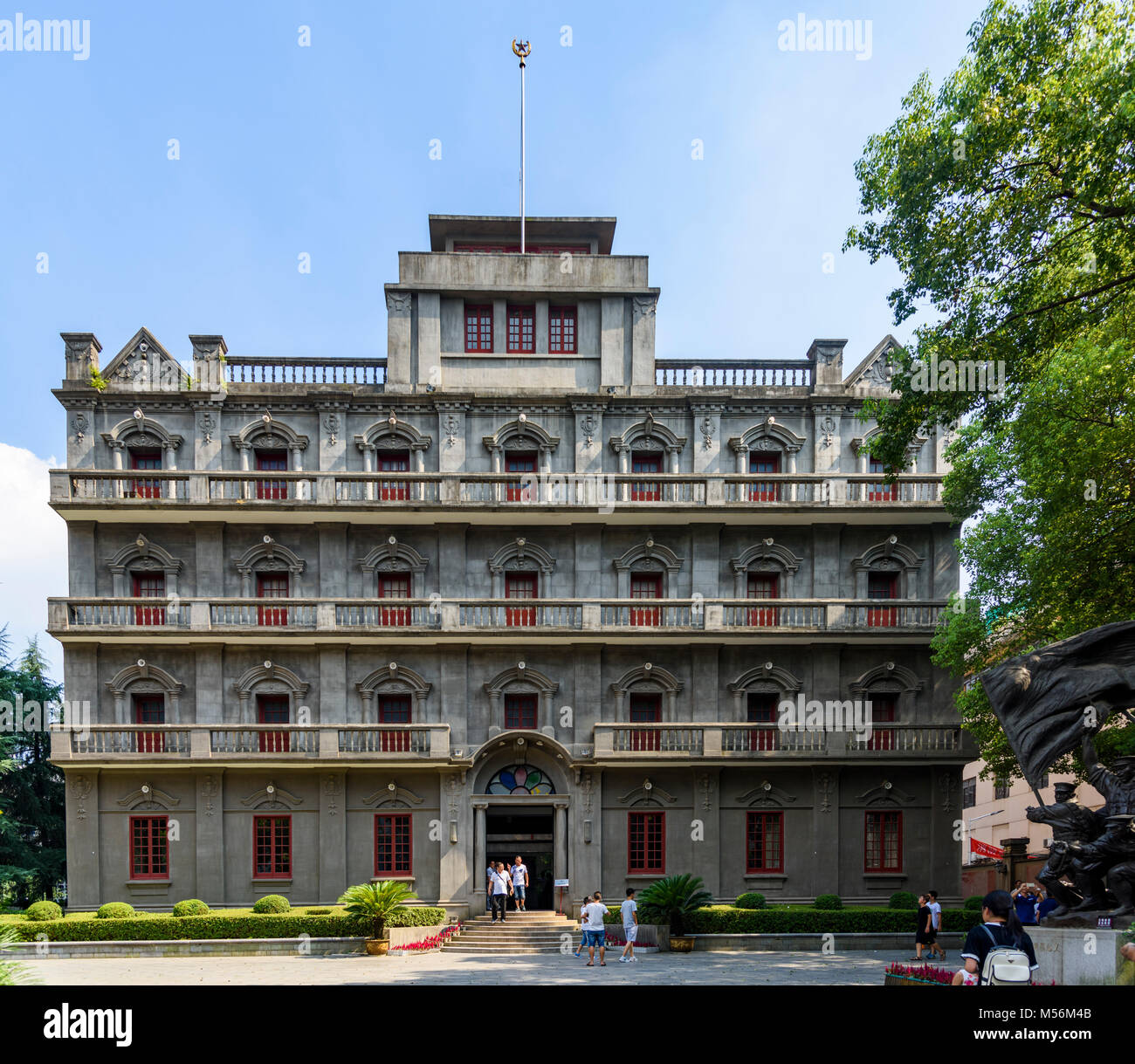
Site Of The Nanchang Uprising Headquarters.
Main Highlights: What You Absolutely Can’t Miss
Visiting the Site of the Nanchang Uprising Headquarters is an essential journey into the heart of modern Chinese history. This memorial not only commemorates a pivotal event in the country’s revolutionary narrative but also offers an enriching glimpse into the rich tapestry of Chinese culture and ideals. Here’s what you absolutely can’t miss during your visit.
1. The Historic Headquarters Building
The original headquarters, constructed between 1922 and 1924, stands as a testament to the architectural blend of Chinese and Western styles. Recognized for its striking grey brick-and-wood structure shaped like the Chinese character “Hui,” this five-story building was the site from which the August 1 Uprising was orchestrated in 1927. Look closely at its decorative reliefs on doors and windows, which reflect the cultural fusion of the era.
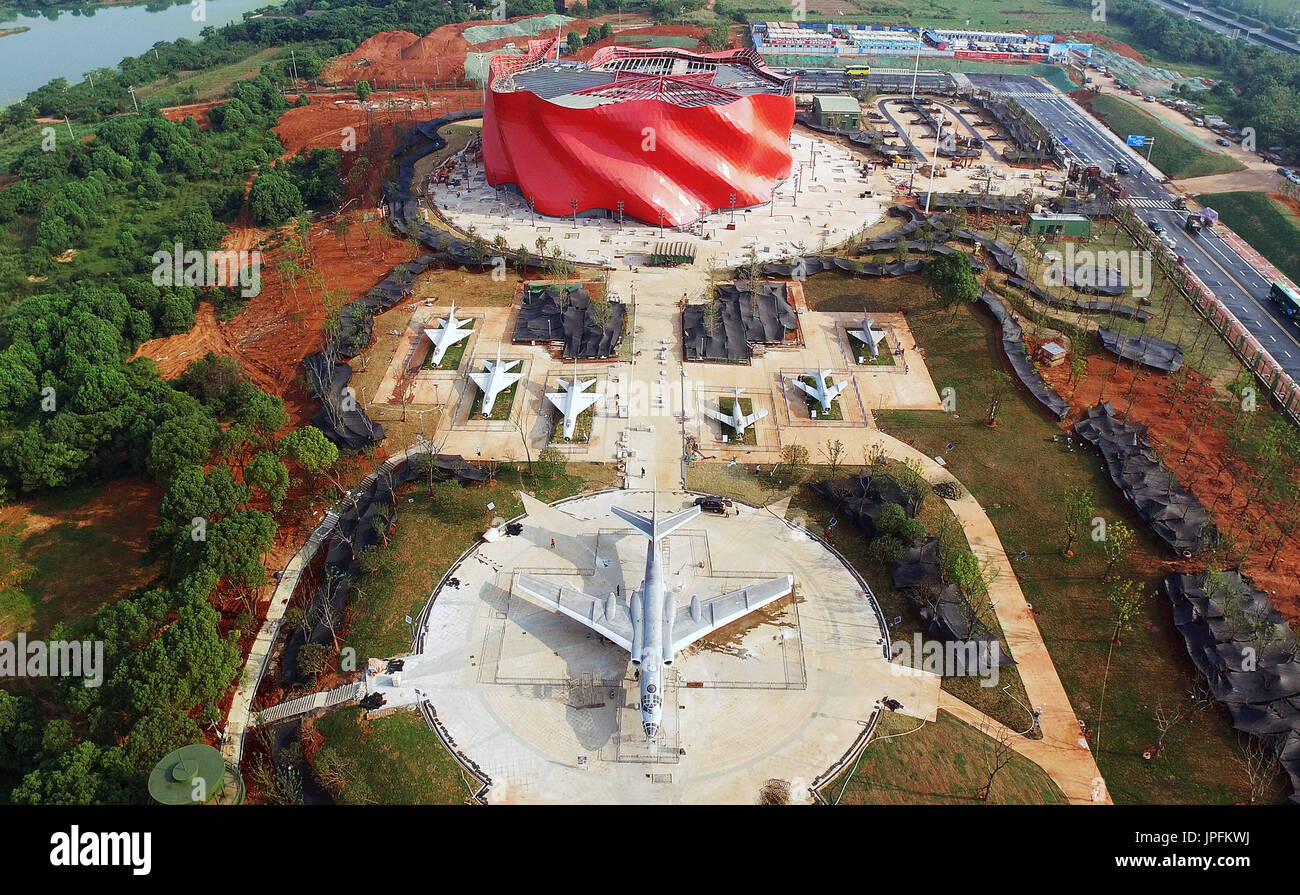
Site Of The Nanchang Uprising Headquarters.
2. Exhibition Rooms and Relics
The memorial houses ten exhibition rooms, each brimming with historical artifacts that vividly narrate the story of the uprising. Notable areas include:
– Meeting Hall: Where key strategies were discussed.
– Zhou Enlai’s Office & Living Room: Offering insight into one of the uprising’s leaders.
– Military Staff Office: Displays various military documents and relics.
– Memorial Room: A poignant space dedicated to honoring those who fought and sacrificed during the uprising.
With 1,295 original objects and 1,416 replicas on display, these exhibition rooms are a treasure trove for history enthusiasts.
3. The Uprising’s Historical Significance
The uprising marked the beginning of armed conflict led by the Chinese Communist Party, which would eventually culminate in significant political change. The memorial provides a comprehensive overview of the uprising’s impact, including its role in establishing August 1 as the birthday of the People’s Liberation Army. Engaging with the exhibits will deepen your understanding of how this event shaped modern China.

Site Of The Nanchang Uprising Headquarters.
4. Free Guided Interpretations
To enrich your visit, the museum offers free guided tours. These sessions are conducted every half hour for individual visitors and are available continuously for groups. Take advantage of this service to fully appreciate the narratives behind the artifacts and the broader context of the uprising.
5. The Commemorative Atmosphere
As you stroll through the memorial grounds, take a moment to reflect on the significance of the site. The solemn atmosphere encourages visitors to pay homage to the revolutionary spirit and the struggles endured by those who fought for a cause that reshaped a nation.
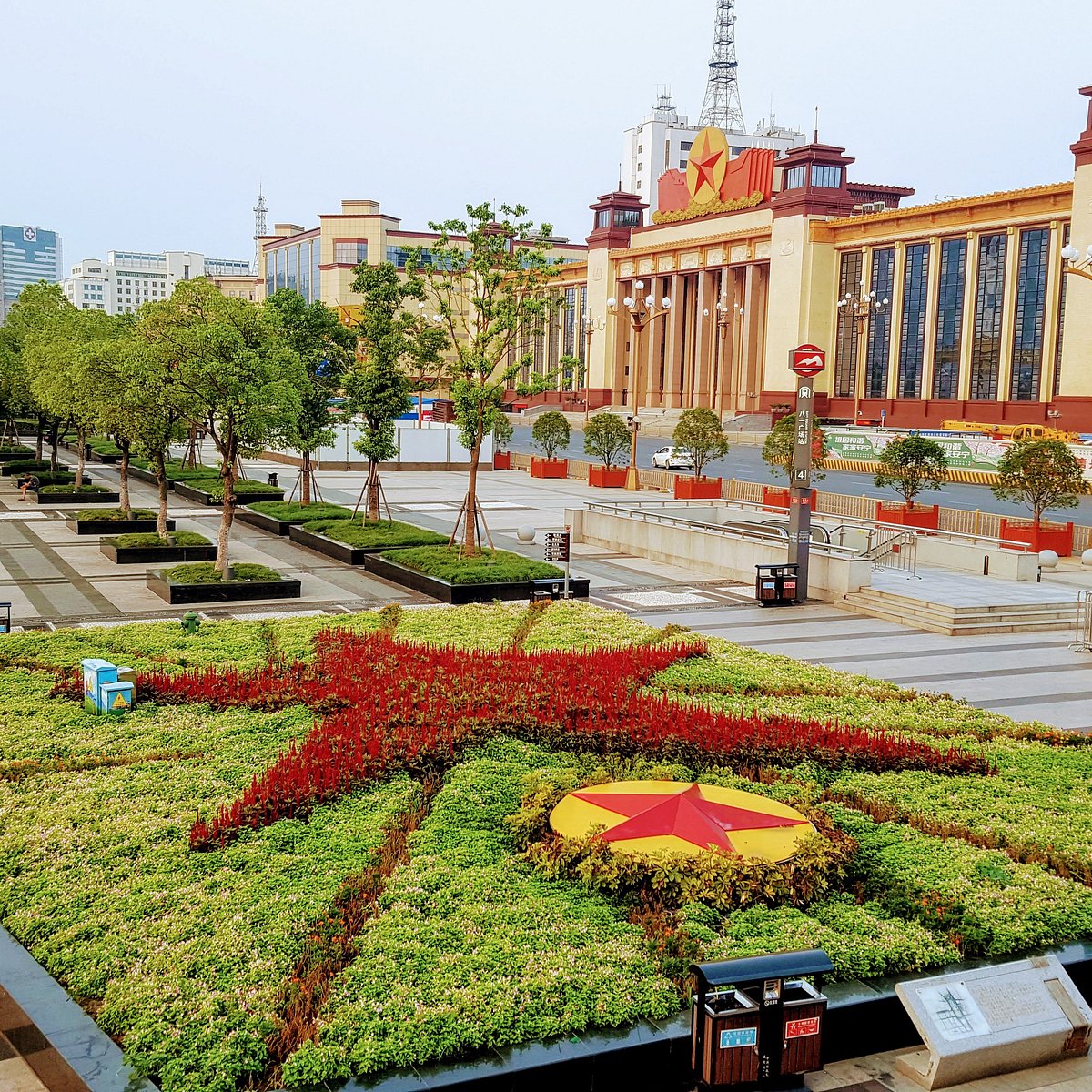
Site Of The Nanchang Uprising Headquarters.
6. Accessibility and Visitor Information
The memorial is located at No. 380 Zhongshan Road, Xihu District, Nanchang, Jiangxi Province. It operates daily from 9:00 AM to 4:00 PM (closed on Mondays), and admission is free with a passport, although visitor numbers are capped at 3,500 per day. It’s advisable to arrive early, especially on weekends and holidays, to avoid long queues.
7. Nearby Attractions
After visiting the memorial, take the opportunity to explore nearby attractions such as:
– Tengwang Pavilion: A historic tower with stunning views of the Gan River.
– Jiangxi Museum: Delve deeper into the province’s rich history and culture.
– Nanchang Bayi Square: A vibrant public space perfect for relaxation and people-watching.
Final Thoughts
The Site of the Nanchang Uprising Headquarters is more than just a museum; it is a powerful reminder of China’s revolutionary past and the ideals of perseverance and change. Whether you are a history buff or a cultural explorer, this memorial offers a profound experience that will resonate long after your visit.

Site Of The Nanchang Uprising Headquarters.
Planning Your Visit: A Practical Guide
Discovering the Site of the Nanchang Uprising Headquarters
If you’re planning a journey into the heart of Chinese history, a visit to the Site of the Nanchang Uprising Headquarters (八一”起义指挥部旧址) is a must. Nestled in the vibrant city of Nanchang, Jiangxi Province, this memorial offers profound insights into a pivotal moment in China’s revolutionary past. Here’s everything you need to know to make the most of your visit.
Location and Accessibility
- Address: No. 380 Zhongshan Road, Xihu District, Nanchang, Jiangxi Province, China.
- Getting There:
- By Bus: Take Bus Routes 5, 25, 33, 229, 232, or 305 to Wazijiao Station (瓦子角站).
- By Subway: Ride Subway Line 1 to Ba Yi Guan Station (八一馆站) and then take a short walk to the memorial.
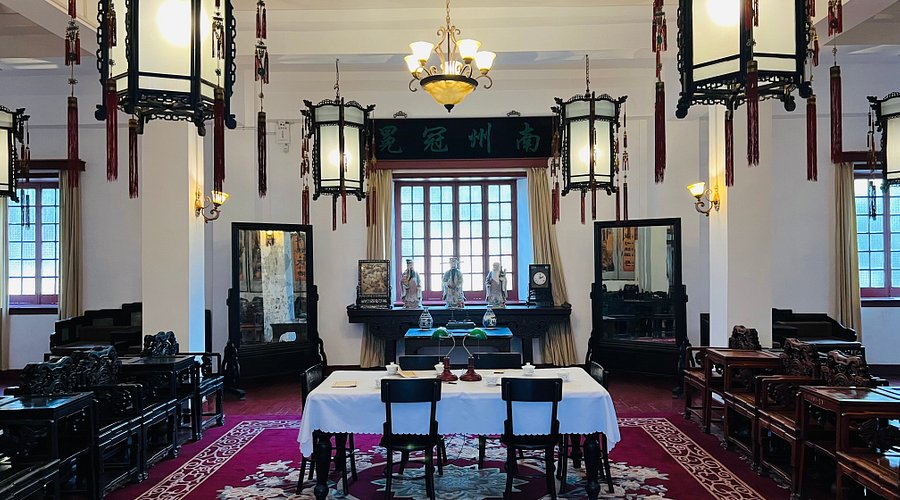
Site Of The Nanchang Uprising Headquarters.
Opening Hours
- Daily Schedule: 9:00 AM – 4:00 PM (Closed on Mondays)
- Last Entry: Visitors must enter the site before 4:00 PM.
Admission Information
- Entrance Fee: Free! Simply present your passport to obtain an entry ticket.
- Visitor Limit: Be aware that only 3,500 visitors are allowed each day, especially during weekends and holidays, so plan to arrive early to avoid long queues.
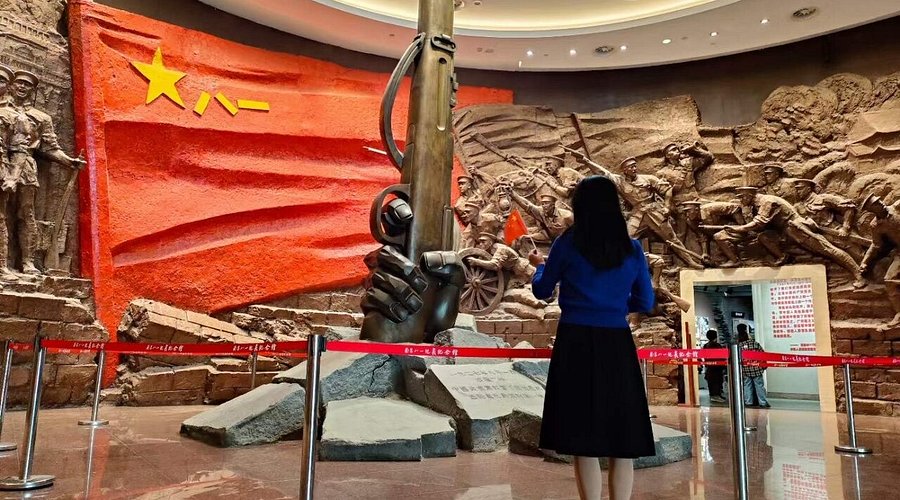
Site Of The Nanchang Uprising Headquarters.
What to Expect
The memorial complex comprises two buildings—the original headquarters and a newly constructed exhibition hall. Here’s a glimpse of what you can explore:
- Exhibition Rooms:
- Meeting Hall
- Office & Living Room of Zhou Enlai
- Office & Living Room of Boqu Lin
- Military Staffs Office
- Living Room for Military Guards & Health Workers
- Four Document Exhibition Halls
-
Memorial Room
-
Artifacts: The museum houses over 1,295 original objects and 1,416 replicas, showcasing a rich collection of history charts, photographs, and cultural relics that narrate the story of the August 1 Uprising.
Guided Tours and Interpretation
- Free Interpretation: While group tours are offered throughout the day, individual visitors can access free guided interpretations every 30 minutes to 1 hour. This service enhances your understanding of the uprising and its significance in Chinese history.
Key Historical Context
The Nanchang Uprising, which commenced at 2:00 AM on August 1, 1927, was a crucial event that marked the beginning of the Chinese civil war. Led by prominent figures such as Zhou Enlai and Zhu De, this rebellion laid the foundation for the formation of the People’s Liberation Army (PLA). The memorial serves not only as a remembrance of the uprising but also as a testament to the enduring spirit of those who fought for their beliefs.
Nearby Attractions
After visiting the memorial, consider exploring other notable sites in Nanchang, such as:
- Tengwang Pavilion: A stunning example of traditional Chinese architecture.
- Meiling Mountain: A scenic area perfect for nature lovers.
- Shengjin Tower: Known for its historical significance and picturesque views.
- Jiangxi Museum: Delve deeper into the local culture and history.
Dining Options
When you’re ready to take a break, numerous dining options are available nearby. Here are a few popular choices:
- Grandma’s Home: Traditional Jiangxi cuisine just steps away.
- Cowne Plaza Nanchang Riverside Lobby Lounge: A perfect spot for coffee and light bites.
- Han JinCheng (Parksons): Offers a mix of Asian flavors.
Final Tips
- Plan Ahead: Given the popularity of the site, especially on weekends, consider visiting during weekdays for a more leisurely experience.
- Stay Hydrated: Be sure to carry water, especially during the warmer months, as you’ll likely spend a few hours exploring the memorial and nearby attractions.
- Respect the Site: As a place of historical significance, maintain a respectful demeanor and follow all guidelines to preserve the integrity of the memorial.
Embrace this opportunity to walk through a vital chapter of Chinese history, and let the Site of the Nanchang Uprising Headquarters ignite your curiosity about the rich tapestry of China’s past.
Tickets: Prices, Booking, and Tips
Visiting the Site of the Nanchang Uprising Headquarters is an enriching experience steeped in China’s revolutionary history. As you plan your visit, here’s what you need to know about tickets, prices, booking, and useful tips to make the most of your trip.
Ticket Information
- Admission Fee: Free. To enter, visitors must obtain a ticket using their passport.
- Daily Visitor Limit: The site accommodates up to 3,500 visitors per day. Given its historical significance and popularity, be prepared for possible queues, especially on weekends and holidays.
Opening Hours
- Daily Hours: The memorial is open from 9:00 AM to 4:00 PM.
- Last Entry: Ensure you enter the premises before 4:00 PM.
- Closed Days: The memorial is closed on Mondays, so plan your visit accordingly.
Booking Tips
- Advance Planning: Given the limited capacity, it’s wise to arrive early, especially during peak tourist seasons or public holidays. Expect longer wait times during these periods.
- Group Visits: If you’re part of a larger group, inquire about group interpretation services. Free tours are offered for groups, while individual visitors can access interpretations every half hour to an hour.
Getting There
The memorial is conveniently located at No. 380 Zhongshan Road, Xihu District, Nanchang, Jiangxi Province. You can reach the site via public transportation:
- Bus Routes: Take Bus Route 5, 25, 33, 229, 232, or 305 to Wazijiao Station (瓦子角站).
- Subway: Use Line 1 to Ba Yi Guan Station (八一馆站), followed by a short walk to the memorial.
Additional Recommendations
- Explore Nearby Attractions: After your visit, consider exploring nearby sites such as the Tengwang Pavilion and Shengjin Tower. These attractions complement your historical journey through Nanchang.
- Museum Exhibits: Take your time to explore the various exhibition rooms inside the memorial, which showcase original artifacts, cultural relics, and historical accounts of the Nanchang Uprising.
By following these guidelines, you can ensure a smooth and enlightening visit to the Site of the Nanchang Uprising Headquarters, which stands as a testament to a pivotal moment in Chinese history. Enjoy your journey through time!
How to Get There: A Complete Transportation Guide
Navigating Your Way to the Site of the Nanchang Uprising Headquarters
The Site of the Nanchang Uprising Headquarters (八一起义指挥部旧址) is a vital destination for those interested in Chinese history and culture. Nestled in the heart of Nanchang, Jiangxi Province, this memorial hall commemorates the significant events of August 1, 1927, and is essential for anyone wishing to delve deeper into the revolutionary past of China. Here’s how to reach this historic landmark with ease.
Getting There by Public Transportation
1. By Subway:
The most convenient way to access the memorial is via the Nanchang Subway. Travelers can take Line 1 to Ba Yi Guan Station (八一馆站). Upon exiting the station, it’s just a short walk to the site, allowing you to soak in the local atmosphere as you approach this important landmark.
2. By Bus:
For those who prefer to take a bus, several routes service the area. You can hop on one of the following bus lines:
– Route 5
– Route 25
– Route 33
– Route 229
– Route 232
– Route 305
Disembark at Wazijiao Station (瓦子角站), which is conveniently located near the memorial. From here, it’s a brief walk to the entrance.
Private Transportation Options
1. Taxis:
Taxis are widely available throughout Nanchang and provide a straightforward means of transport to the memorial. Depending on your location, a taxi ride will likely take around 15-30 minutes. Ensure that you have the address written in Chinese to show the driver: 南昌八一起义纪念馆, No.380 Zhongshan Road, Xihu District, Nanchang.
2. Ride-Hailing Services:
Popular ride-hailing apps like Didi Chuxing are operational in Nanchang, offering a modern alternative to traditional taxis. Simply input the memorial’s name or address into the app, and a car will be dispatched to your location.
Walking and Cycling
If you are staying nearby, consider exploring the area on foot or by renting a bicycle. Nanchang’s pleasant weather and the scenic surroundings make for an enjoyable stroll or ride, allowing you to discover the city’s charm while making your way to the memorial.
Accessibility Information
The memorial is designed to be accessible for all visitors. If you require assistance, don’t hesitate to contact the staff on-site for support. It’s essential to note that entry is free, but visitor numbers are capped at 3,500 per day. Plan your visit accordingly, especially during weekends and holidays when crowds may swell.
Final Tips for Your Visit
- Opening Hours: The memorial is open from 9:00 AM to 4:00 PM daily, but you must enter before 4:00 PM. It is closed on Mondays.
- Tickets: Entry is free with a valid passport, but it is advisable to arrive early to secure your spot, particularly during peak tourist seasons.
- Guided Tours: Free interpretive services are available, with tours offered every half hour to an hour. Group tours may have more frequent departures.
Exploring the Site of the Nanchang Uprising Headquarters not only offers a profound insight into a pivotal moment in Chinese history but also allows you to appreciate the architectural beauty and cultural significance of this memorial. Safe travels!
Local Cuisine and Accommodation Nearby
When visiting the historic Site of the Nanchang Uprising Headquarters, you’ll find yourself immersed not only in the significant events of Chinese history but also in the vibrant local culture, particularly through its cuisine and accommodations. Here’s a guide to some delightful dining options and comfortable places to stay nearby.
Local Cuisine
Nanchang is renowned for its rich culinary traditions, reflecting the flavors of Jiangxi Province. Here are a few must-try dishes and restaurants:
-
Jiangxi Rice Noodles (米粉)
A local specialty, these rice noodles are often served in a savory broth with a variety of toppings. Try them at Grandma’s Home (234 ft from the memorial), known for its authentic Jiangxi flavors. -
Stir-Fried River Shrimp (炒虾)
Freshwater shrimp stir-fried with garlic and spices is a delightful treat. Visit Hong JiaTing Japanese Restaurant (0.2 mi away) for a fusion twist on this classic dish. -
Nanchang Hot Pot (南昌火锅)
Experience communal dining with a local hot pot, where you can cook fresh ingredients at your table. HanLiXuan KaoRou ChaoShi (0.2 mi away) offers a vibrant atmosphere ideal for this culinary adventure. -
Braised Pork Belly (红烧肉)
A dish beloved by locals, this succulent pork belly is cooked to perfection. DongFang HaoJing HuaYuan Hotel (0.2 mi away) serves this dish in a cozy setting, perfect for a post-visit meal. -
Street Snacks
Don’t miss out on local street food, including scallion pancakes and baozi (steamed buns). Nearby ZhongShan XiaoChi YiTiao Jie (0.2 mi away) is a delightful alleyway filled with vendors offering a range of tasty snacks.
Accommodation Options
To enhance your visit, consider staying at one of these nearby accommodations that offer comfort and convenience:
-
Cowne Plaza Nanchang Riverside
Located just a mile from the memorial, this hotel provides modern amenities, a relaxing atmosphere, and stunning views of the Gan River. It’s perfect for travelers seeking a blend of luxury and accessibility. -
DongFang HaoJing HuaYuan Hotel
Just a short walk from the memorial, this hotel offers comfortable rooms and an on-site restaurant featuring local cuisine. It’s a great choice for those wanting to immerse themselves in local culture. -
Han JinCheng (Parksons)
This mid-range hotel (0.2 mi away) is known for its clean and spacious rooms, making it an ideal base for exploring Nanchang’s historic sites, including the Uprising Memorial. -
Grandma’s Home
For a unique lodging experience, consider booking a room at this home-style restaurant that offers a few guest rooms. Enjoy authentic home-cooked meals while being just steps away from local attractions. -
Nanchang Bayi Square Hotel
A bit further away but worth the trip, this hotel is situated in a vibrant district known for shopping and dining. It offers comfortable accommodations and easy access to transportation.
Conclusion
Exploring the Site of the Nanchang Uprising Headquarters offers not only a glimpse into China’s revolutionary history but also a taste of the region’s delightful cuisine and comfortable accommodations. Make the most of your visit by indulging in local flavors and resting in inviting lodgings, ensuring a memorable cultural experience.
Frequently Asked Questions
Frequently Asked Questions about the Site of the Nanchang Uprising Headquarters
1. What is the significance of the Site of the Nanchang Uprising Headquarters?
The site is a crucial historical landmark, commemorating the August 1 Nanchang Uprising of 1927, which marked the beginning of the Chinese Revolutionary War. It symbolizes the struggle for the establishment of a workers’ and peasants’ armed force, later known as the People’s Liberation Army (PLA).
2. Where is the Site of the Nanchang Uprising Headquarters located?
The memorial is located at No. 380 Zhongshan Road, Xihu District, Nanchang, Jiangxi Province, China. It is easily accessible via public transportation, including bus routes and the subway.
3. What are the opening hours for the memorial?
The memorial is open daily from 9:00 AM to 4:00 PM. However, visitors must enter the site before 4:00 PM. Please note that it is closed on Mondays.
4. Is there an entrance fee to visit the memorial?
No, the entrance to the Site of the Nanchang Uprising Headquarters is free. Visitors need to present their passport to obtain a ticket. Keep in mind that the site limits entry to 3,500 visitors each day, so arriving early is advisable, especially on weekends and holidays.
5. Are there any guided tours or interpretive services available?
Yes, the memorial offers free guided interpretations to enhance your understanding of the exhibits. Groups can enjoy this service at any time, while individual visitors can access it roughly every 30 minutes to an hour.
6. What can I expect to see inside the memorial?
The memorial consists of two buildings: the original headquarters and a newer extension used as a display hall. It features ten exhibition rooms that showcase historical artifacts, photographs, documents, and relics related to the uprising, providing visitors with a comprehensive overview of this pivotal event in Chinese history.
7. How can I get to the memorial using public transportation?
You can take several bus routes, including 5, 25, 33, 229, 232, or 305, to Wazijiao Station. Alternatively, the subway’s Line 1 will take you to Ba Yi Guan Station, from which you can walk to the memorial.
8. Are there any other attractions nearby?
Yes, the memorial is located close to several other significant sites, such as the Tengwang Pavilion, Meiling Mountain, and the Jiangxi Museum. These attractions can easily be explored in conjunction with your visit to the Nanchang Uprising Headquarters.
Final Thoughts on Your Trip
As your journey comes to a close, reflecting on your visit to the Site of the Nanchang Uprising Headquarters will undoubtedly leave a lasting impression. Here, history comes alive, offering a profound insight into a pivotal moment in China’s revolutionary narrative.
Immersive Historical Experience
Standing in the very location where the August 1 Uprising ignited a series of events that would shape modern China, you have walked in the footsteps of revolutionary leaders like Zhou Enlai and Zhu De. The museum’s carefully curated exhibitions, featuring original artifacts and poignant relics, provide a powerful connection to the past. Every room tells a story—a story of courage, sacrifice, and the enduring spirit of those who sought to change their country.
A Cultural Reflection
Visiting the memorial is not just about witnessing history; it’s about understanding the cultural fabric that has been woven through decades of struggle and resilience. The free guided tours enhance your experience, offering narrative depth and context that enrich your knowledge of the uprising and its significance.
Practical Considerations for Future Travelers
If you plan to visit this site, be mindful of its popularity. Arrive early to secure your entry, especially during weekends and public holidays when visitor numbers peak. The memorial operates from 9:00 AM to 4:00 PM, but don’t forget to check the local transportation options to ensure a smooth journey.
Final Thoughts
Your visit to the Site of the Nanchang Uprising Headquarters serves as a reminder of the power of collective action and the pursuit of justice. As you leave, take a moment to reflect on the courage that transformed a city into a symbol of hope and change. Whether you’re a history enthusiast or a casual traveler, this site provides a unique lens through which to understand not only China’s past but also its ongoing evolution.
Embrace the stories, share your experiences, and let the echoes of history inspire your future adventures. Safe travels!